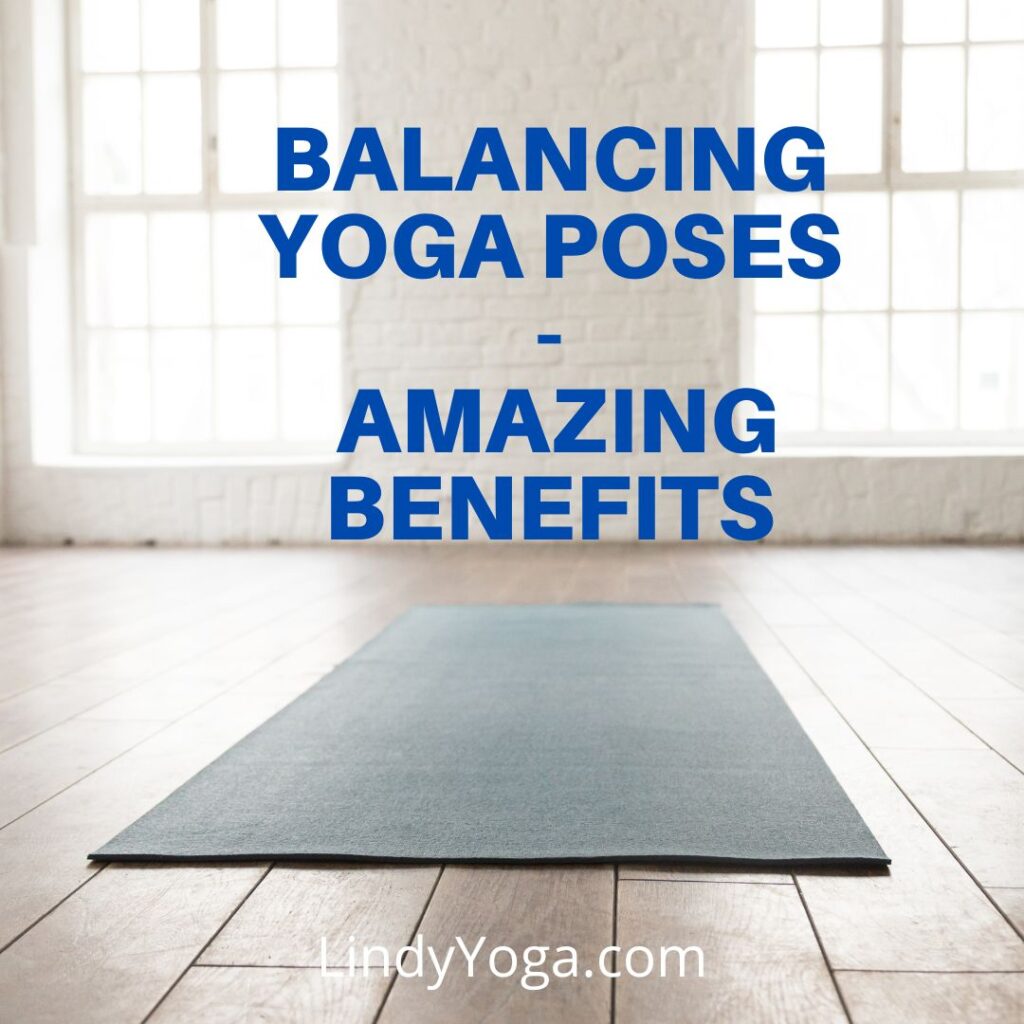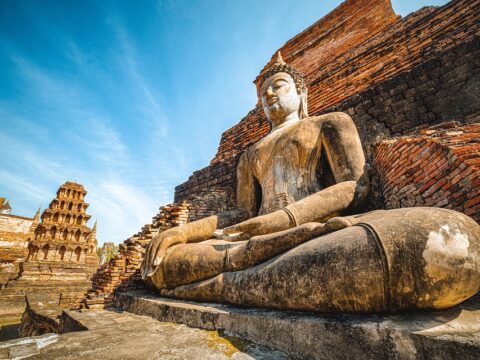Yoga may be considered a physical activity, but it is also a spiritual practice. To improve your life, you need to balance your physical, mental and emotional well-being. And to achieve that, you need to take care of yourself – physically, mentally and emotionally.
And there are so many different ways to do this, including taking care of your body, mind and spirit through yoga. In fact, there are so many benefits of yoga poses that it can be hard to know where to start. Yoga is considered a way to help you become healthier, happier and more balanced. But it is also a way to improve your mental and emotional health and reduce stress and anxiety.
However, there are many different types of yoga poses. And while some types of yoga are more physical, others are more mental than physical. So which type of yoga is right for you?
Podcast
Yoga for physical health
There are many yoga poses for your physical health. For example, there are many yoga poses that help you build strength – something everyone needs. There are also poses that help you increase your flexibility, and there are poses that help you calm your mind and focus your thoughts.
And if you’re looking for something to help you relax and unwind, there are poses to help you achieve that goal.
Yoga poses for mental health
If you want to improve your mental health, you should make sure that you do yoga poses that help you to be less anxious, more confident and more motivated.
There are many different poses that will help you be more focused, but here are some that will help you with each of these goals.
8 Tips to Improve Balance in Yoga Postures
1. Start at the base
Make sure your body is in a straight line from your ankles to your hips to your shoulders. It is always important to align your feet, legs, torso and arms when doing yoga postures, but this is especially important for balance postures. Make sure your body is in a straight line from your ankles to your hips to your shoulders when you hold the pose.
Make sure you have a good feel for the ground before you begin the pose. Place your feet, hands or forearms on the floor to form the base of the pose you want to practise.
2. Fix your gaze
To keep your balance, it is helpful to choose a point to focus on that is not too far away and does not move. In yoga this is called drishti and is a way of developing a focused intention.
3. Take your time
Be careful when doing yoga balance poses so that you don’t fall. It is best to move slowly and pay attention to what you are doing so that you can stay in the pose. If you move too quickly, you may lose your balance and it will be harder to get back into the pose.
4. Get support
There is no shame in getting help from props. For example, you can practise near a wall or chair and use it for support. You can even use the wall or chair to practice balance poses.
Another option is to ask a fellow yogi to help support and stabilise you.
5. Focus on your breath
A deep and steady breath can help you stay stable and calm. The better you focus on your breath, the easier it will be for you to maintain balance in these yoga postures.
6. Don’t be afraid
Although fear of potential danger is often very useful, it can also be one of our biggest obstacles.
Don’t be afraid to fall, have fun and learn. Embrace being a beginner again. If you fall out of a yoga pose, don’t be frustrated, just laugh and try again.
7. Be patient
You won’t be a master the first time you try something new. Don’t worry if you can’t manage a new balance pose in yoga. Remember that everyone has to start somewhere. You won’t achieve anything if you don’t practice regularly, as is often the case in yoga and in life.
If you have difficulty with a balance pose, don’t give up! Keep trying and eventually you will get there.
8. Relax
Remember that yoga is just an exercise and you don’t have to prove anything to anyone. If you wobble or fall while trying to keep your balance, it’s not the end of the world.
With a relaxed mind, you can enjoy your yoga practice and make progress in balancing yoga poses.
Yoga poses to improve balance
According to several yoga teachers and experts, what are the most important asanas to improve and increase balance?
Mountain pose (Tadasana)
Balance is the key to mental and physical health. It is important to find a balance between work, rest and play. We often live our lives unbalanced, which leads to stress, anxiety and fatigue.
When we practise mountain pose, we focus on bringing our energy back into balance. It is helpful to be aware of when we are overly energetic and find ways to reduce our energy. By keeping our lives balanced, we stay centred and grounded.
How to do the pose?
- To get started, you will need a yoga mat and yoga supports.
- Start with a full body stretch. Stand in front of the wall.
- Place your hands on the wall.
- Lean forward, bend your knees and lean back.
- Repeat this movement three times.
- Bend your left knee and hold it in the mountain posture.
- Lean back towards the wall, extend your left foot and lift your right leg.
- Repeat this movement three times.
- Bend your right knee and hold it in the mountain pose.
- Lean back towards the wall, extend your right foot and lift your left leg.
- Repeat this movement three times.
- Sit down.
- Slowly return to a flat supine position.
- Rest.
- Repeat these steps a few times a day.
And that’s it! This is how you do the yoga pose mountain pose. Remember to breathe.
Balancing Table Pose (Dandayamna Bharmanasana)
The benefits of this pose are numerous. It strengthens the body, relieves stress on the nerves and joints and improves your digestion and metabolism. It also reduces stress and helps you gain self-confidence.
It helps to relieve tension in the head, shoulders, neck and back, which is why this pose is very useful for people with chronic pain.
Dandayamna means “to hold in between” and bharmanasana means “yoga pose”.
This pose is a balancing yoga pose. It helps to stretch the legs and the back. The entire pose is performed with the head and neck on the floor.
How to do the pose?
- Get on all fours, the knees should be directly under the shoulders and the toes under the hips.
- Lift your head and look straight ahead. Keep your head and neck lowered.
- Slowly bring your two palms together and place your hands behind your back.
- Spread your fingers wide apart.
- Move your arms down to the sides of your body and hold them there until you hear a satisfying crack.
- Once your arms are stretched out to the side, try to straighten them.
- Bring your head forward and look at the floor.
- Slowly bring your head back to its original position.
- Repeat steps 1-8 2 times.
- Relax.
- When you are ready, return to the starting position and stretch your arms out to the side.
- Bend your knees and slowly roll onto your right side.
- Extend your left leg and place it directly over your right leg.
- Place your right palm directly under your nose.
- Keeping your head in the same place, bring your left knee to your chest and lift your upper body off the floor.
- Keep your hands and feet on the floor.
- Inhale and slowly move your head to the right.
- Exhale and slowly bring your head back to the centre.
- Repeat steps 15-18 twice.
- Relax.
- When you are ready, stand up and slowly lower your body.
- Breathe in deeply and exhale fully.
- Gently bend your knees and place your right foot on top of your left foot.
- Lean your upper body forward.
- Your upper body should be in front of your right foot.
- Your right hand should rest on the floor.
- Keep your left leg slightly bent.
- Your left hand should rest on the floor.
- Inhale and slowly move your head and neck forward.
- Try to move your head as far as possible without hurting yourself.
- Breathe out and slowly return your head to its original position.
Repeat steps 25-31 twice.
Tree Pose (Vrksasana)
Tree pose improves your balance. This is an extremely important part of yoga because it allows you to remain stable in any situation. Your core muscles are the muscles you need to support the weight of your body. These muscles enable you to do things like lift, bend, twist and stand upright. Your trunk muscles are what support all these movements.
How to do the pose?
- Stand with your feet parallel and place your hands on your hips.
- Lift the heels so that they meet the back of the knees and the toes point forward.
- Stretch the arms out in front of you.
- Bend the legs slightly.
- Slowly pull the chest forward towards the thighs.
- Keep the back straight.
- Lean back and bend the elbows to reach the floor.
- Remain balanced and keep the chest lifted.
- Exhale slowly while lifting the chin.
- Relax the shoulders.
- Gently roll the shoulders away from the ears.
- Inhale and lift the head until it reaches forward.
- Stretch the neck back to lift the chest.
- Look down at your toes.
- Slowly move your gaze to the ceiling.
- Raise your head until it touches your spine.
- Continue to look at the toes.
- Inhale deeply and exhale slowly.
- Concentrate on the feeling of the breath flowing in and out of the body.
- Do not tense up.
- Do this pose daily.
- Practice it for no more than 15 minutes a day.
- Increase the time if your practice is effective.
- The key to this pose is balance.
- This is a balancing pose.
- If you practice the pose correctly, you should feel balanced.
- If you are not balanced, you will not be able to perform the pose correctly.
Practice this pose before practising any other pose.
If you practise this pose for a few days, you will automatically become more balanced and stronger.
Lateral Plank Pose (Vasisthasana)
Lateral Plank Pose, also called Vasisthasana, helps you maintain balance and improve your posture. It is the most basic of all backbends and one of the easiest postures to master.
Lateral Plank Pose is an easy and simple backbend that helps you maintain balance and stretch your hamstrings, spine and pectoral muscles.
The side plank pose stretches your abs, shoulders and chest. The pose also strengthens your core, helps you improve your posture and promotes balance.
How to do the pose?
- First stand on your left foot
- Now that you are standing on your left foot, raise your right arm straight above your head.
- Once you have raised your arm, begin to lift your body so that you are in a straight line.
- Your right knee should be bent and your right foot should be next to your right thigh.
- Lift your body and arm straight up.
- Once you have lifted your body and arm, hold this position for 30 seconds.
- Then slowly lower your body
- As you lower your body, you will notice your arms bending.
- When your arms are fully bent, hold them in this position for 1 minute.
- And now let’s try it with your right foot forward.
- This time, first raise your right arm straight up in the air.
- Then lift your whole body so that you are standing on both feet with your body forming a straight line.
- Then slowly raise your body so that you are in a straight line again.
- And finally hold the position for 30 seconds
- After holding the position for 30 seconds, slowly lower your body.
- After lowering your body, hold your right foot in place for one minute.
Dancer’s Pose (Natarajasana)
The benefits of this yoga pose are endless. Here are some of the main benefits of this pose that you can practice immediately.
One of the main benefits of the dancer’s pose is the improvement of balance and posture. When we stand in warrior pose, we use our core muscles to stabilise our body and maintain balance. However, when we relax these muscles, our balance and posture suffer.
How to do the pose?
- Stand upright with your arms at your sides. Step back with your left foot behind your right foot.
- Bring your left hand to your knee. Bring your right arm down towards the floor.
- Step forward with both feet and shift your body weight onto your front leg. Bring your arms beside your body with your elbows turned outwards.
- Step both feet together again and bring your arms up. Release your left hand, which will naturally come down.
- Inhale and raise the back leg to the sky, bringing your knee to a 45-degree angle. Hold the pose for up to 30 seconds and then slowly lower yourself back to the ground.
Repeat steps 1 to 5 on the other side.
Extended Hand to Big Toe (Utthita Hasta Padangusthasana)
This pose strengthens the muscles in your hips, shoulders, arms, legs and ankles. In addition, this pose strengthens your lungs and improves blood circulation. Finally, this pose helps relieve stress and tension in your back and neck.
How to do the pose?
- To learn how to do the outstretched hand to big toe pose (Utthita Hasta Padangusthasana), follow this example.
- Stand in the mountain pose (Tadasana).
- Step forward with the right foot and extend the leg behind you.
- Cross the right foot over the left foot.
- Bend both knees and place your hands on your lower shins.
- As you continue to stretch your legs, your right knee meets your right hand.
- Lift your chest and pull your abdomen in.
- Try to pull your tailbone towards your back heel.
- Stretch your left arm up and behind you.
- Place your palm on the floor and use your hand as a fulcrum to support your weight.
- Lean forward and grasp your big toe as far as you can.
- Shift your body weight onto your hands and feet.
- Stretch your legs through again and bend your left knee.
- Cross your left foot over your right foot and repeat steps 4 to 10.
- Repeat steps 4 to 10 again and then try to move your body as far forward as possible.
You have now learned how to perform the yoga pose “Extended Hand to Big Toe” (Utthita Hasta Padangusthasana).




